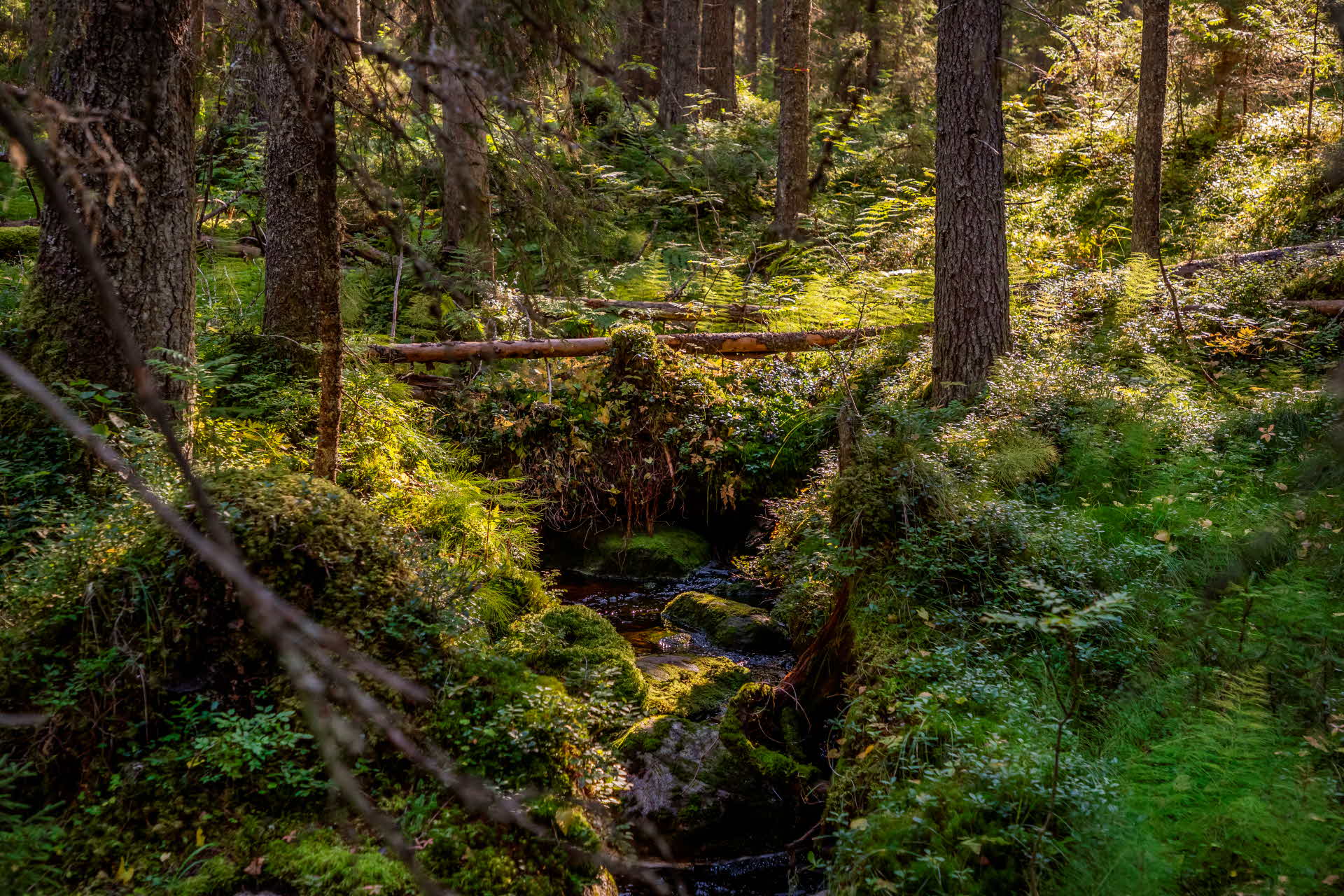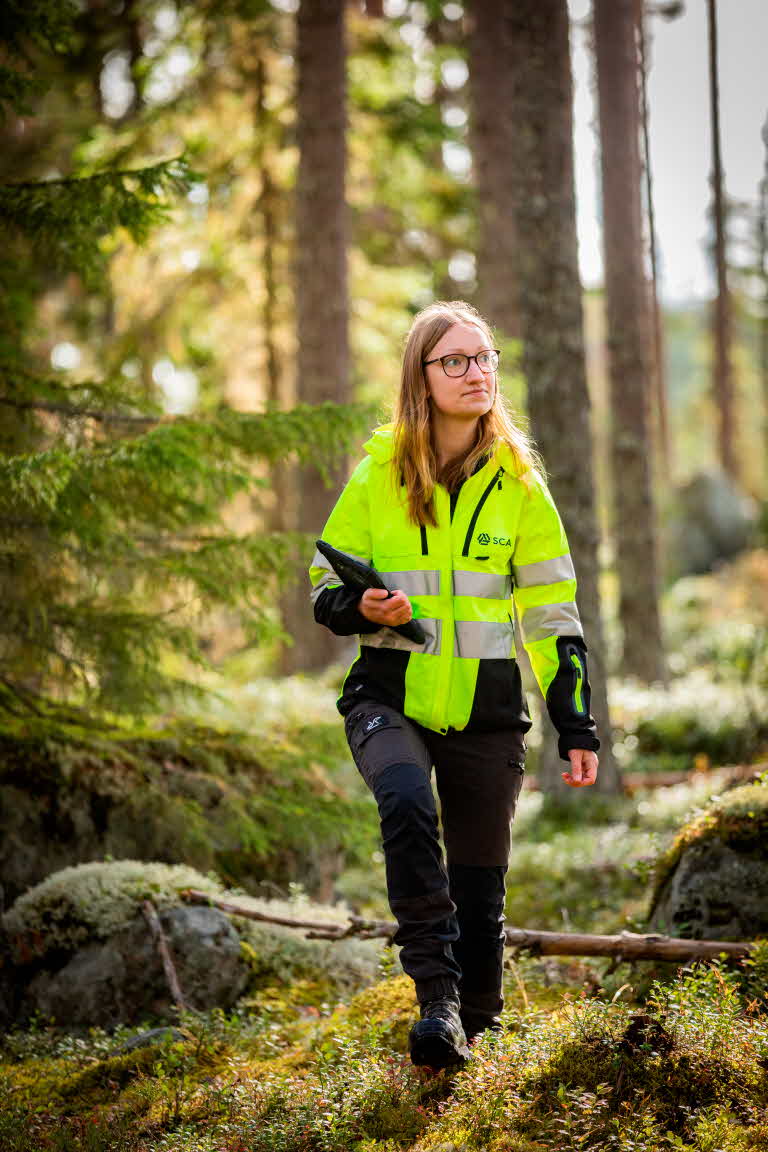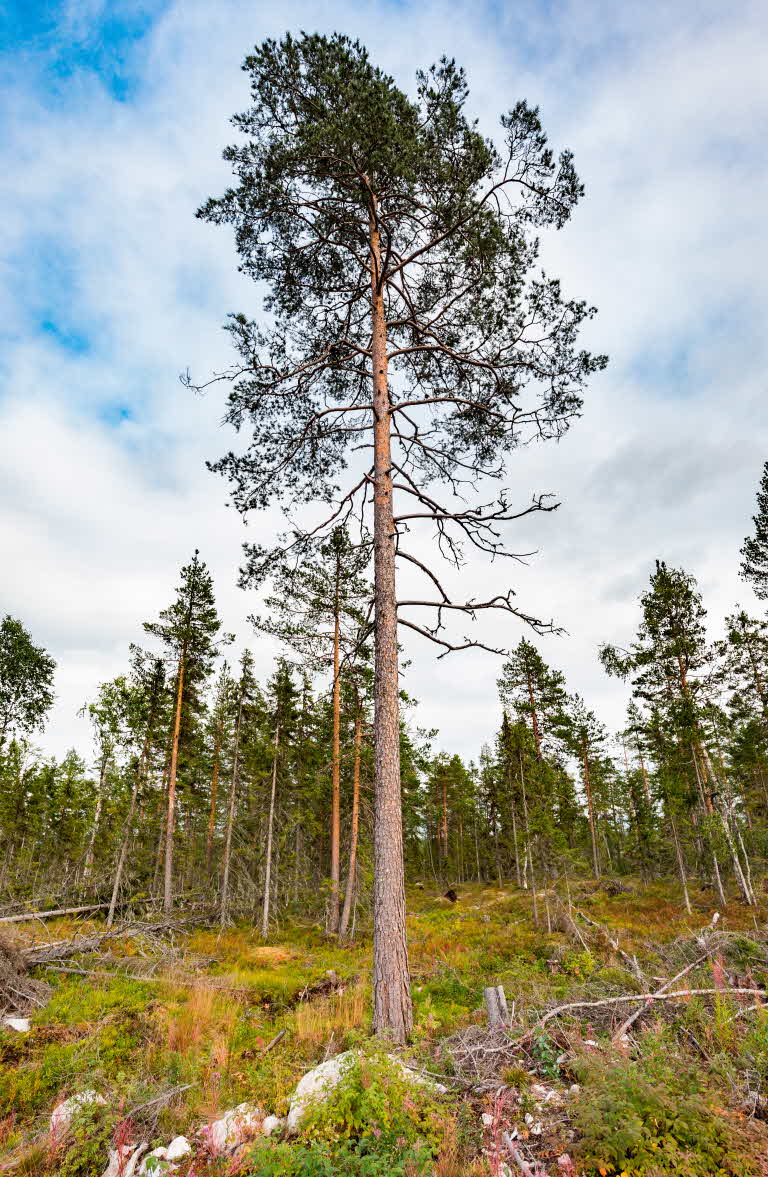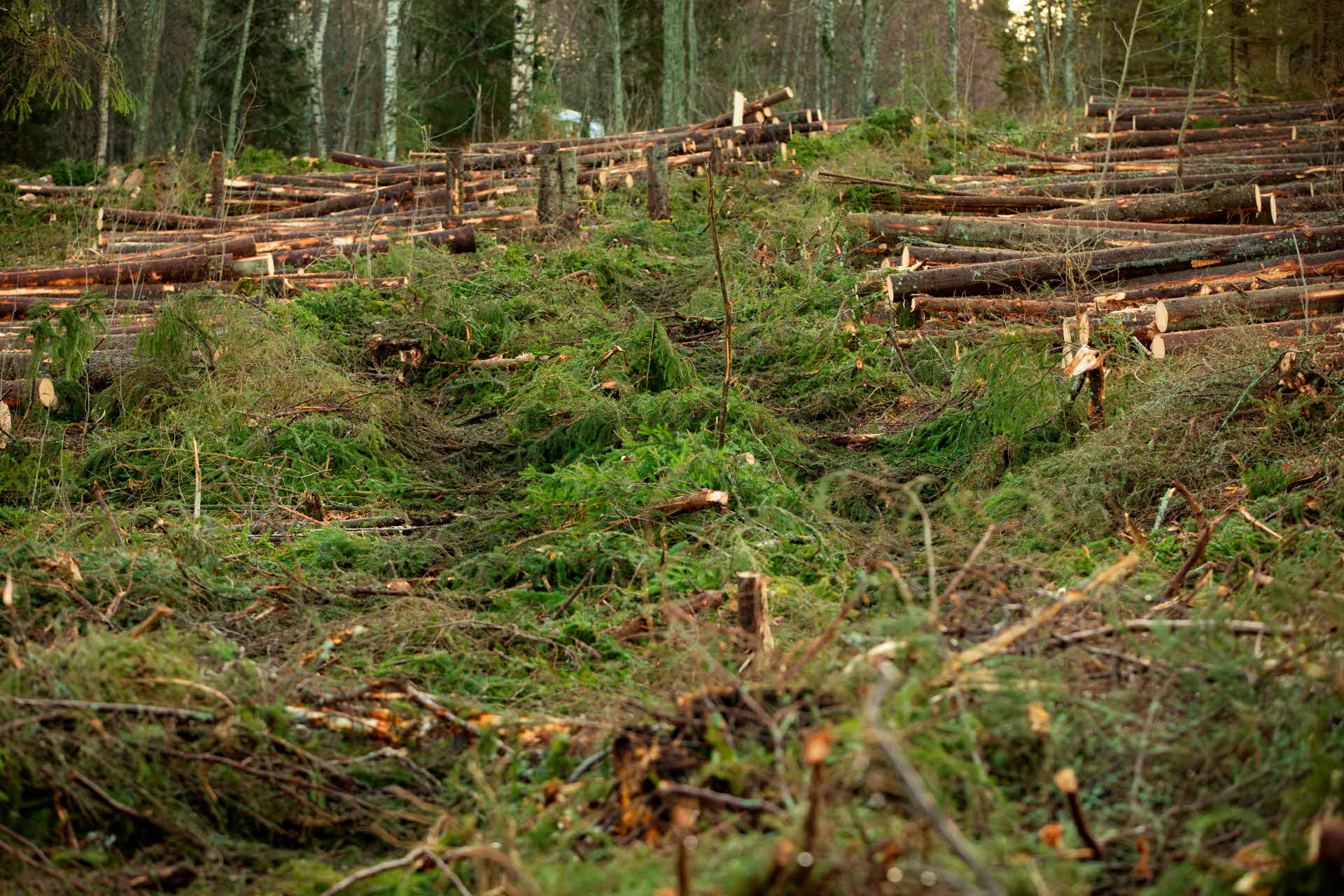
- FOREST
- SCA's FORESTS
- RESPONSIBLE FORESTRY
- ENVIRONMENTAL CONSIDERATION
- NATURE CONSIDERATION IN FINAL FELLINGS AND THINNING
Nature consideration in final fellings and thinning
Planning plays a key role in our nature conservation measures during our harvesting operations. The most extensive planning takes place prior to harvesting, since these operations have a major impact on the forest.

Planning plays a key role in nature conservation measures during harvesting operations. The most extensive nature conservation planning takes place prior to harvesting, since these operations have a major impact on the forest environment.
A basic prerequisite for effective nature conservation is a well-implemented felling plan. Planning for harvesting is always carried out by highly qualified. They walk systematically through the forest to be felled, and plan the areas to be set aside – the conservation patches.
They use a GPS to mark the forest areas to be set aside on a digital map. The purpose of the felling plan is to create a good reference in the form of maps and directives for the felling team.
Key role for felling teams
The felling team holds a key role in the nature conservation process. The team determines the conservation objects to be saved, such as eternity trees, tree groups and small flushes, and how forest machines should be driven to avoid damaging the natural environment.
They use computers with digital maps and have a GPS in their forest machines, making it easier for them to see exactly where they are working and to follow the felling plan.
New objectives for good environmental consideration
Our forest operations are certified under (PEFC/05-23-131) AND FSC® (FSC 004466).
We also use the Swedish forestry target images for good consideration that have been developed in collaboration with others in the forest sector within the project Dialogue on Environmental Consideration. The target images aim to increase consensus and clarity about what good environmental consideration means and, together with formal protection and voluntary provisions, will contribute to achieving the forest and environmental policy goals.
The target images are primarily intended to be used for forestry measures in production forests, what is commonly called general retention. The target images include, for example, biotopes requiring consideration, trees and shrubs with natural values, buffer zones towards wetlands, lakes and watercourses, as well as off-road driving in forest land and water crossings.
Create variation

When working at conservation object level, felling teams leave individual trees or groups of trees, of varying species and ages, to promote greater variation with different tree species and mixed tree ages in the next forest stand.
We save all trees with high conservation value, or trees that are significant for the natural environment. Trees with high conservation value include particularly thick or old trees, thick asp and alder as well as all sallow and mountain ash.
If there are no trees with obviously high conservation value, we leave other storm-resistant trees that can develop into thick trees with high conservation value. On each harvesting site, at least ten storm-resistant trees are left untouched, including trees with high conservation value. Studies show that we leave at least twice the number of trees on average when consideration patches are included.
Each tree species that occur in a felling site must be saved in some way. We also save all dead trees and naturally occurring high stumps. In addition, we create new high stumps by cross-cutting three to five trees per hectare at a height of about three meters.
Nature conservation when thinning
Thinning also has a major impact on the character of the future forest stand. Thinking forward and creating optimal conditions for many species to survive in the thinned forest is therefore essential. Planning effective nature conservation measures when thinning enables even more effective nature conservation measures in future harvesting operations.
Preserving the biological diversity requires variation in the forest landscape. Our nature conservation measures vary during thinning operations, depending on the type of forest. In uniform, well-thinned young forests and heavily thinned older forests, we use thinning to achieve greater variation. In unmanaged thinning stands, conservation value must be preserved and sometimes strengthened.
Conservation patches, such as flushes, exposed bed rock, outcrops and ravines, must also be left untouched during thinning operations. Creating a stratified forest, with an abundance of deciduous trees around watercourses, is also important.
One example of measures at conservation-object level is that we always leave sallow, mountain ash and alder trees. We try to favor trees with high conservation value, such as thick and old trees, and to leave trees that can develop high conservation value. We generally leave all dead trees. In stands dominated by a single tree species, we save divergent trees. If there are any spruce trees in a pine stand, for example, we leave the spruce.
Avoid driving damage
To avoid the risk of driving damage, planning for felling operations should be carried out on snow-free soil. SCA now uses its own method, called Gentle Effective Logging (SED). The method is based on avoiding driving damage by, in advance, identifying the best routes to drive timber to the delivery site along the forest road, and by laying extra brash mats along machine routes. If necessary, temporary bridges may also be constructed from timber or portable bridges used.
